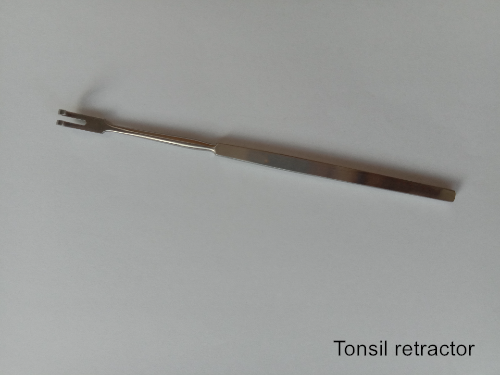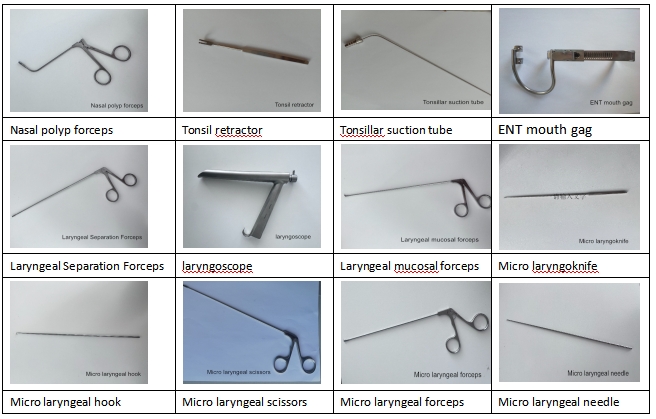Tonsil retractor is a kind of passive surgical instrument used for tonsil related operation in otolaryngology surgery, belonging to class Ⅰ medical equipment
![]()
Tonsil retractor is a kind of passive surgical instrument used for tonsil related operation in otolaryngology surgery, belonging to class Ⅰ medical equipment

Material and design features
Material: mainly using medical stainless steel or titanium alloy, both corrosion resistance and mechanical strength, part of the blade using carbon steel to enhance sharpness
Structure: Fine head design: such as micro laryngeal scissors blade width ≤1mm, tonsil hemostatic forceps elbow design (45° or 90°), suitable for deep laryngeal cavity operation
Ergonomic handle: wrapped with silicone or non-slip material to reduce operation fatigue, some instruments are equipped with self-locking devices to prevent slippage
Use and maintenance points
Cleaning and disinfection: pre-clean immediately after operation to remove blood stains, and complex instruments (such as laryngoscope) need to be manually disassembled and cleaned. Using low temperature plasma sterilization (precision instruments) or high temperature and pressure steam sterilization (high temperature resistant materials)
Function check: confirm that the device is closed tightly, the edge is not rolled or chipped, and the clamping force is tested
Precise clamping: tonsil hemostatic forceps only buckle 1-2 teeth to avoid tissue necrosis caused by excessive compression; Indirect laryngeal forceps required laryngoscope guidance to locate the foreign body
Drying and rust prevention: focus on the treatment of lumen instruments (such as suction tubes), use compressed air or special absorbent cloth to remove residual water and prevent motor corrosion
Lubrication maintenance: regular application of medical lubricating oil in the joint, keep the opening and closing flexible; Titanium alloy instruments should avoid chemical corrosive cleaning agents
Storage management: classified storage in dry, dust-free environment, avoid extrusion deformation; Precision instruments, such as microlaryngoscissors, are packaged separately
![]()
Through material optimization (stainless steel/titanium alloy), functional integration (laser, suction) and precise design (microstructure, ergonomics), otolaryngology instruments have realized the leapfrom traditional open surgery to minimally invasive endoscopic technology. Its maintenance needs to follow strict cleaning, drying and sterilization processes, and the application scenarios cover common diseases (such as polyps and foreign bodies) to complex tumor treatment
Tonsillectomy :Equipment requirements: tonsil hemostatic forceps (olecranon elbow), tonsil scissors (curved blade), tongue pressure plate;The key points of operation: after clipping the blood vessel, the surgical field was cleaned with suction tube
Polypectomy of the vocal cord:Equipment requirements: support laryngoscope, micro laryngeal scissors (0.5mm blade), laryngeal polypus forceps (cup head); Technical adaptation: precise positioning under endoscope and laser-assisted reduction of bleedingn
Removal of laryngeal foreign bodies:Equipment requirements: indirect laryngeal forceps (gun design), laryngoscope, foreign body forceps; Operation standard: to avoid laryngeal mucosa injury under blind vision operation, children need general anesthesia fixed position.
Glottoplasty:Equipment requirements: microsuture needle, vocal cord retractor, laryngeal dilator; Fine operation: the vocal fold mucosa was sutured under the microscope to restore the voice function

Contact: Ms.Ye
Phone: 18030057721
E-mail: info@xmekoda.com
Whatsapp:008618030057721
Add: Torch High-tech Zone(Tongxiang) Industrial Base,Xiamen,China
